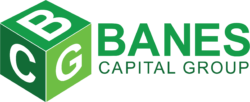Déjà vu – all over again
From a personal perspective, January 2022 was very much like 2021. I managed to contract Covid in the early days of each month. Much like the first episode, I felt the onset of great fatigue and had to weather out the storm. Though not related, this month has been far worse. I’ve been dealing with neck pain for months now from ancient sports injuries. Despite dozens of physical therapy sessions and 2 nerve blocks, I’ve had debilitating neck pain over the past few weeks. My MRI from months ago showed a lot of damage. My doctors are following protocol with the treatments, though it’s now obvious there’s no simple solution. I never learned to type correctly and hammer out each BMR with my forefingers. With my right arm greatly incapacitated, I’m using my left pointer finger to attempt writing
Quick Links
writing anything this month – not to mention trying to use a mouse ‘wrong handed.’ This is now the longest period between BMR issues – and that’s the reason. My approach to the BMR was to provide a ‘readers digest’ type of report that caught the highlights. For the time being, I’m going to include only the most pertinent economic data and time–price analysis. I’m thinking of breaking out the support–resistance levels to a separate report. That way, I can update the cycles and price targets on a more timely basis – without writing a full issue. We’ll see how it goes.
Bitcoin rose 133% into November 8th, 2021 – but has since fallen by 48%. That’s nothing new to crypto, which saw major swings of up 119%, down 53%, up 127%, and then down 48% since the end of 2020. 2021 was the only year that all 11 sectors of the S&P industry groups saw double–digit gains. However, as the S&P was cresting at a new high on January 4th to kick off the new year, just 20 days later the Nasdaq had fallen 19% versus its November 22, 2021 high. The Dow Industrials have now corrected by 10.3% to their January 5th high, and the S&P plunged 12.4% versus its high on the 4th. It was looking rather bleak as of the January 27th, but stocks staged their best rally since 2020 on Friday – and followed with a good Monday gain which marked the best 2–day rally since 2020. Needless to say, the January barometer – which argues ‘so goes January, so goes the year’ – is not off to a good start! However, the handicap is now only 3.32% for the Dow and 5.26% for the S&P – instead of 5.99% and 9.22% (respectively) following the end–of–month rally. In the last Bond Market Review, we said that equities had a trend–change high due near January 7th. Those cycles now call for buying dips until an expected high due near March 7th.
If you were on the crypto bandwagon and bought in early November, you’ve seen a 50% crash. Bitcoin and most cryptos are phantom assets that have no backing or quantifiable price. You can spend it, but only if someone will take it. Like many assets though, investors have a fear of missing out on the upside. Crypto could double or triple from here – maybe even more, but over the last 3 months it’s been outperformed by nearly every asset class. The Dollar had a most amazing year. Despite very–high inflation, the Dollar jumped 3.5% in early 2021 only to give it all back. However, after that drop into May 25th, the U.S Dollar surged 8.82%. Fed hikes are good for the Dollar. Imagine being holders of negative–yielding EU or Japanese debt – that also lost nearly 9% in currency arbitrage. Folks are calling the plunge in crypto a meltdown – but what’s to melt? Of course, the term easily applies to precious metals. Yet cryptos have lost $1 trillion in value over the last 90 days. They’d been like stocks – you could buy every dip! However, that’s been a losing strategy lately. The Fed has been contemplating a U.S. Dollar based ‘stablecoin.’ We don’t think people want a cryptocurrency that would be tied to the Dollar and subject to reporting requirements. Most investors are rather seeking non–government type coins with the potential for price appreciation.
Looking Ahead
- Equity cycles are now sideways to better – and suggest a high near March 7th.
- Bond yield cycles suggest selling rallies for yields mostly higher into March 4th.
Fed on the Gridiron
In their confirmation hearings before the Senate Banking Committee, Fed Chair Jerome Powell and Vice Chair nominee Lael Brainard each spoke to the need to curb inflation or tackle it. Curb implies nudging the beast in order to slow it. A more interesting word is ‘tackle.’ As we have witnessed college and pro playoffs, it’s clear that the best strategists with the best weapons enter every playoff with expectations of success – yet not all prevail. Simple logic leads us to believe that this Fed – that has never battled inflation of this magnitude – even has a game plan in place. For the most part, the only tools they know how to employ are raising and lowering rates – and various form of asset purchases. Two of those weapons would seem out of play, and the previous generation of talented Fed officials (back in the ‘70s and early ‘80s) had to let high inflation play out – which took years. There’s no real playbook to fight inflation – the Fed just thinks it’s possible. There’s always a group that thinks ‘if only we’d the chance to solve the problem, we could have done better.’ Yet the beast is fierce, and hope and chance are often just the stuff of fairytales.
Fed Policy
Even when the Fed begins hiking rates, the elephant in the room is how they will handle their $8.9 trillion balance sheet. For now, the Fed is still buying assets – even though they intend to discontinue that process in February or early March (at the latest). Powell says the U.S. needs a “long expansion” in order to achieve a strong labor market with high participation. He said: “To get a long expansion we are going to need price stability.”
New voters for 2022 rolled on with the January 26th statement. Two things stood out. The FOMC vote was unanimous – and the Fed is seeking transparency in their policy. The FOMC added ‘well above 2%’, acknowledging inflation and used the word ‘soon’ to telegraph their next meeting – which is March. In fact, in his comments following the statement, Powell said: “The committee is of a mind to raise the fed funds rate at the March meeting.” No surprise! They said: “With inflation well above 2 percent and a strong labor market, the Committee expects it will soon be appropriate to raise the target range for the federal funds rate.” Powell had made the case that there would be no hikes until QE ended. They also made way for March hikes within their statement. They said: “The Committee decided to continue to reduce the monthly pace of its net asset purchases, bringing them to an end in early March.” They noted that some sectors of the economy are still being affected by the “recent sharp rise in COVID–19 cases.”
We think it’s important that the Fed begins to hike in March. Given their denial of inflation for so long, they need to regain some credibility. We don’t think the Fed will start with a 50–bps move, though that’s been suggested by a few members. Atlanta’s Raphael Bostic just backed off that stance. The Fed likes consistency – if not tightening at every meeting, as they ‘ve done on many previous campaigns, they should choose every other. This current situation falls into that category. Thus, a March kickoff could lead to 4 hikes in 2022. Inflation is high but there may be trouble from slow growth or a larger pullback in stocks. We would hope that this Fed will be nimble enough to consider all elements at each meeting – and not subject the markets to the kind of rate hiking campaigns we’ve seen in the past.
Growth and Outlook
The Fed’s Beige Book said: “Optimism remained high but waned somewhat, as the share of firms expressing positive expectations for continued economic growth over the next six months narrowed.” Ten of the 12 districts said the current virus was affecting activity. The report said the economy was growing at a modest pace. The Atlanta Fed’s GDP–Now forecast is less optimistic. Growth forecasts were hovering near 6.5% to close out Q4 2021 – but their initial estimate for Q1 2022 came in at .1% – nearing contraction or recession. The first release of GDP for Q4 2021 closed out nicely at 6.90% with a Personal Consumption reading of 3.30%.
Inflation
For some time now, we’ve known that inflation was not ‘transitory’ but rather yielding readings at multi–decade highs! The thought that this Fed knows how to curb or tackle inflation takes a lot of blind faith. After letting prices go ‘too far’, the fix conjures up corralling cats. Former Treasury Secretary Lawrence Summers said “we are moving towards higher entrenched inflation.” It’s our belief that ‘transitory’ will be replaced with ‘entrenched’ – if that names ‘sticks’ (no pun intended). The other dominating substitute is ‘embedded’ but we think the early use of ‘entrenched’ by Fed officials will lead to making it the one that takes hold. As an aside, the Atlanta FRB that has the GDP–Now forecast already has a ‘sticky price index’ that measures values on items that change infrequently. Unfortunately, correcting current levels of inflation is subject to many variables. There’s just no easy solution.
U.S. rates had been held down by a lack of inflation and Covid–related headwinds. Another tether that had held Treasury rates down was very–low to negative foreign yields. In fact, the German bund (10–year) just recently went positive for the first time since 2019! Very–real inflation, Fed hikes, and a lessening in the severity of Covid variants and improving treatments will become tailwinds for Treasury rates. We expect inflation to remain entrenched but not to run away (in hyperinflation mode). Covid and its variants will tone down in severity. Natural immunity will play a bigger role as vaccines protect but fail to stop the spread of disease. The flu and colds will make a comeback.
Workers are catching on to the fact that there are numerous opportunities out there that are more to their liking and offer more reward as well. That said, the labor shortage should continue throughout 2022. These are factors not easily corrected, and the high level of available jobs could exacerbate the problem in services and restaurants – as workers are lured away from hourly and part–time jobs. Rising inflation should be negative for the Dollar – but higher U.S. rates accompanied by Fed hikes would be bullish. In more normal times, Commodities and Gold would trade lower as the Dollar gets strengthens.
For a while, the pain of inflation was much–limited to gas prices – where it hit home the quickest. We believe that inflation won’t be as onerous as in the late ‘70s because of globalism and competitive factors. Some of the things people have to obtain are elevated – like bread, some foods, and gasoline. Others will continue in the mode of the post Y2K world. Cell phones, computers, electronics, TVs, etc. are things people want and their prices have been driven down by production efficiency and competition. Efficiency in U.S. agriculture has also been holding prices down while feeding America and beyond. But, some of the inflation has clearly been self–inflicted. Limiting oil production and pipelines removed the competition of capitalism and investment that had seen the U.S. not only self– sufficient but also a major and net exporter.
Consumer Prices have risen at the quickest pace in 39 years. CPI jumped .50% in December and the annual pace accelerated from 6.80% to 7.00% – the highest since June 1982. The core (ex food & energy) rose .60% with annual core CPI quickening from 4.90% to 5.50% (the most since 1991). Meanwhile, real wages have fallen for a 9th month. Real (net of inflation) Hourly Earnings worsened from –1.70% to –2.40%. Real Weekly Earnings also dropped from –1.90% to –2.30%. Producer Prices saw smaller increases as December PPI rose .20% and the annual pace slipped from 9.80% to 9.70%. Of course, from such lofty levels, even 9.70% was the second highest rate since 2010. Core PPI rose .50% – however accelerating the annual core pace from 7.90% to 8.30%.
The Fed’s favorite inflation gauge, the PCE Deflator, rose .40% in December and accelerated from 5.70% to 5.80% on an annual basis. The core rose .50% and the annual core pace quickened from 4.70% to 4.90% – the highest level since April 1983. Import Prices fell .20% in December, though they rose .30% ex petroleum. The annual pace lessened from 11.70% to 10.40%. Export Prices fell 1.80%.
Treasuries, Agencies, and MBS
The Treasury curve is the flattest it’s been since February 2021. 2–year yields are the highest since February 2020. The 5–year yield is stretching back to December 2019 levels. The 10–year is at its highest yield since early 2020, while 30–year rates are mid–range a 10–month trading window. Last week, yields were higher by 16, 5.5, 1, and 0 bps in a flattening twist for the 2, 5, 10, and 30–year Treasury sectors. Yields this week are higher by 1.5, .5, and 3.5 for the 2, 10, and 30–year sectors but flat at 5–years.
Freddie Mac 30–year mortgage rates have risen .44% in 2022 to 3.55%. 15–year rates are .31% higher to 2.80%. Foreign entities channeled $137.4 billion into longer–term U.S. assets in November and moved $223.9 billion into U.S. assets on a net basis. Foreign Treasury holdings rose to a record high. The U.S. just had its smallest monthly budget deficit since December 2019. With a $21.3 billion deficit for December, the 3–month deficit for the first quarter of fiscal 2022 stood at $377.694 billion – 34.07% below last year’s pace 3 months in.
The $54 billion 2–year note auction brought .99%. Demand was stellar and the buying group that includes foreign central banks jumped from 61.4% to 66% – the highest since 2009. The $55 billion 5–year note came at 1.533% with a record low dealer award of 14.8%. Foreign allocations rose 3% to 68.7% and demand was very good. The $53 billion 7–year note brought 1.769%. Demand was up versus the last auction and foreign awards rose from 59.3% to 62.6%. The 10–year note reopened the November 2031 maturity to add $36 billion at 1.723%. Demand improved to December and foreign allocations fell from 68.8% to 65.5%. The $20 billion 20–year bond was sold at 2.21%. Demand fell to last month and foreign buying was the second highest on record (increasing from 64.8% to 66.2%). This supply was added to the November 2041 maturity. The reopening of the November 2051 30–year bond brought 2.075% for $22 billion in supply. Demand rose to the last auction and foreign buying stepped up to 65.0% from 60.8% in December. Next week, the Treasury will offer 3–year notes on Tuesday (2/08), 10–year notes on Wednesday (2/09), and 30–bonds on Thursday (2/10).
Economics
Early this month November JOLTS Job Openings fell from 11.091 million to 10.562 million. A record of 4.5 million left their jobs in November. Challenger Job Cuts were 75.30% less than in 2020. ADP Employment Change had private payrolls beating expectations of 410K with an 807K result. After ADP data suggesting a better result, Nonfarm Payrolls again suffered a huge miss. They came in at 199K versus 450K expected. (November was 210K versus 550K expected). However, the 2–month revision added 141K jobs. Private Payrolls gained 211K jobs versus 400K expected and Manufacturing added 26K. The Unemployment Rate for December fell from 4.20% to 3.90% with the Labor Force Participation Rate unchanged at 61.90%. Average Hourly Earnings were up .60%, slowing the annual rise from 5.10% to 4.70%. Average Weekly Hours remained at 34.7. The Underemployment Rate dropped from 7.70% to 7.30%. Initial Jobless Claims surged to a 3–month high of 290K for the week of January 15th. They were again high but fell to 260K this past week. Continuing Claims had fallen to 1.551 million but then rose to 1.675 million.
University of Michigan Sentiment fell from 70.6 to 67.2 – the lowest since 2011. Current Conditions fell from 74.2 to 72 – the lowest since August 2011. Expectations dropped from 68.3 to 64.1. The Conference Board’s Consumer Confidence also declined – falling from 115.2 to 113.8. The Present Situation rose from 144.8 to 148.2 but Expectations dropped from 95.4 to 90.8. December Leading Indicators rose .80%. NFIB Small Business Optimism rose by .5 to 98.9. The Philadelphia Fed Business Outlook rose from 15.4 to 23.2 and MNI Chicago PMI (purchasing managers) rose .9 to 65.2. Kansas City Fed Manufacturing rose 2 points to 24. Others were lower. The Chicago Fed National Activity Index fell from .44 to –.15. Empire (New York) Manufacturing fell from 31.9 to –.7. Dallas fell from 8.1 to 2 and Richmond dropped from 16 to 8. Industrial Production dropped .10% in December and Capacity Utilization fell .10% to 76.50%. ISM Manufacturing fell from 61.1 to 58.7. ISM New Orders fell from 61.5 to 60.4.
Orders for Durable Goods fell .90% in December. Ex transportation, they rose .40%. Orders for Capital Goods were flat. The services outlook dropped from a record 69.1 to 62 in December. The Employment Cost Index rose .30% in Q4 2021. Personal Income rose .30% in December, but Personal Spending declined by .60% – the most since last February, reducing personal savings. We spent what we didn’t have very well in November as Consumer Credit doubled expectations and surged to a record $39.991 billion! However, Retail Sales fell 1.90% in December. Only a .10% loss was expected. There was a loss in 10 of the 13 retail categories. Ex autos, sales fell 2.50%. The Trade Balance deficit widened from $67.2 billion in October to $80.2 billion in November. Imports rose to a record $304.4 billion. The merchandise trade balance deficit rose from $98 billion in November to $101 billion in December. The services outlook dropped from a record 69.1 to 62 in December.
Homebuilder confidence fell one point to 83 in January. December Housing Starts fell 1.43% to an annual 1,702K unit pace. Building Permits surged by 9.09% to a 1,873K unit annual pace. December sales of Existing Homes fell 4.63% to 6.18 million annual units. New Home Sales rose 11.86% to 811K annual units. Pending Home Sales in December fell by 3.80%. The FHFA House Price Index rose 1.10% in November. Metro home prices rose by 1.18% – slowing their annual gain a bit from 18.46% down to 18.29%. The Home Price Index also slipped from 19.03% to a still–lofty 18.81% annual gain.
Tuesday kicks off February trading with ISM Manufacturing, JOLTS Job Openings, and January Vehicle Sales. Wednesday follows with MBA Mortgage Applications (which rose 2.30% but then fell 7.10% over the past 2 weeks) and ADP Employment Change (private payrolls for January). Thursday brings Challenger Job Cuts, Nonfarm Productivity, jobless claims, services, and manufacturing orders. Friday gives us January payrolls. Next Monday (02/07) is set for December Consumer Credit.
Equities
Into January 21st, the Nasdaq lost 7.55% and the S&P fell 5.68% for their worst weeks since March 2020. The Dow Industrials lost 4.58% for their worst showing since October 2020. Stocks fell further into the 27th – giving many indexes their worst beginning in more than a decade. However, the Friday and Monday rallies lessened the severity of those that had been in correction status (off more than 10%). The Dow surged 18.73% in 2021 and the S&P rose 26.89%. They had been down by 5.99% and 9.22% into the 27th (and much more on a high to low basis) but rallied to end the month off only 3.32% and 5.26%.
The Dow gained 460.10 points last week after dropping 1,646.44 points the week before. That 1.34% gain ended at 34,725.47. The Dow was 1.17% higher today. The S&P fell 5.68% into the 21st and then rose .77% last week. It was 1.89% higher today. The Nasdaq lost 7.55%, gained .01%, and then surged 3.41% today. The Dow Transports lost 4.14% and 1.30% over the past 2 weeks but gained 1.56% today. Bank stocks plunged 10.03% 2 weeks ago, rose 1.56% last week, and then added .42% today.
Other Markets
Crude Oil advanced 1.57% and then 1.76% to rise for a 5th and 6th week. Crude Oil rose .90% today. Commodities gained 1.24% and 1.76% (also for a 6th straight gain) and were .90% higher today. Gold gained .84% but then fell 2.56% last week. Gold gained .57% today. The U.S Dollar gained .50% and 1.70% over the past 2 weeks to the highest levels since June 2020. However, the Dollar was .75% lower today. The Japanese Yen fell 1.39% last week but gained .13% today. The Euro lost 1.70% last week but was .75% higher today. Corn gained 3.20% last week but fell 1.57% today. Cotton gained 2.49% last week to register a 7th up week. It soared 3.08% today to the highest levels since June 2011.
“Who controls the past controls the future. Who controls the present, controls the past.” George Orwell
Doug Ingram, Financial Economist
Additional Information is Available on Request
Banes Capital Group, LLC (BCG) has been granted permission by the author, Doug Ingram and Strategic Technical Initiatives, to distribute this market commentary (MC). All views, opinions and estimates included are his as of this date – and are subject to change without notice. Mr. Ingram’s views, opinions, and estimates are not necessarily those of BCG and there is no implied endorsement by BCG of any of the information contained within this MC (which may in fact directly conflict with those being published and distributed by BCG, whether or not contemporaneous). In the event of such conflict, BCG is not under any obligation to identify to you any such conflicts. This MC is for informational purposes only and does not constitute a solicitation or offer to buy or sell any securities, futures, options, foreign exchange or any other financial instrument(s) and/or to provide any investment advice and/or service. Although the information presented has been obtained from sources believed to be reliable, we cannot guarantee or assume any responsibility for the accuracy or completeness of the information shown herein.







